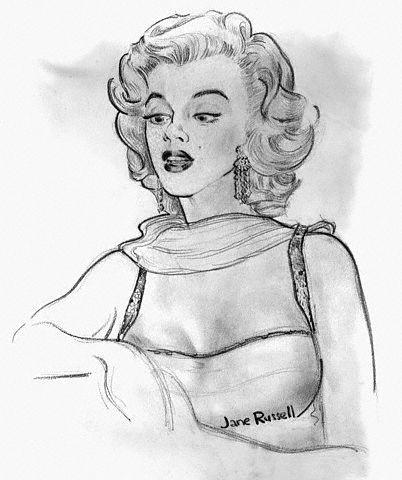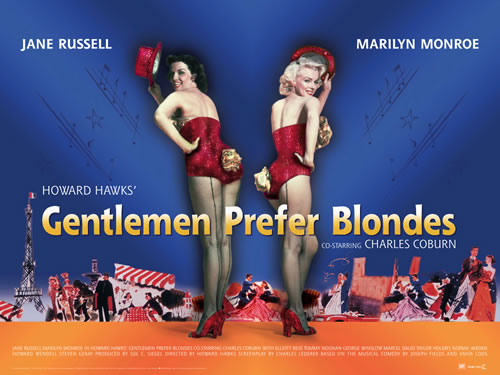The Duke of York’s Picture House at Preston Circus, Brighton, is the oldest independent cinema in England and celebrates its centenary this month. Like many local residents, I can ring the changes in my own life by recalling my frequent visits to the Duke’s over the last 16 years. (For more on Brighton’s cinematic past, click here.)
When I first moved to Brighton in 1994, I would often attend the matinees as it was a safe and friendly place for a single girl to hang out. Among my favourite films at the time were Hal Hartley’s Amateur and Kieslowski’s Three Colours series. And one afternoon before Christmas, I saw Marilyn Monroe on the big screen for the first time, in her most celebrated film, Some Like It Hot.
Sometimes I’d go to the late shows, like Brazil on one of my first dates with my future husband, Andy. In recent years our children have become regulars at the Saturday morning Kid’s Club. As the centenary looms, I’ve had a second chance to see Marilyn at the Duke’s, in the classic musical comedy, Gentlemen Prefer Blondes.
Based on Anita Loos’ famous 1925 novel, Gentlemen Prefer Blondes was adapted for Broadway in 1949, with Carol Channing as the ‘blonde bandit’, Lorelei Lee. Film rights were swiftly acquired by Twentieth Century Fox, with veteran Howard Hawks to direct. Initially it was expected that the lead role would go to either Channing or the studio’s reigning queen, Betty Grable.
However, by 1952 a new starlet was rising – Marilyn Monroe, who was finally offered the part on June 1st, her 26th birthday. She had previously worked with Hawks just a few months before, in Monkey Business, playing a gorgeous but inept stenographer – Charles Coburn, her elderly boss in the film, would also appear in Blondes. Her brunette pal, Dorothy, was to be played by Jane Russell, who had found fame in Howard Hughes’ risqué western, The Outlaw, filmed in 1941 but suppressed until 1946.
Five years Marilyn’s senior, Jane was also a native of Los Angeles and had attended Van Nuys High School with her future co-star’s first husband, James Dougherty.
While the press expected the two sex symbols to feud, they became firm friends. One of the few in Hollywood to gain Marilyn’s trust, Jane described her as ‘a dreamy girl’, whose dedication to her job, acute sensitivity and depth of knowledge set her apart from other sex symbols.

Sketch by Jane Russell
Released in early 1953, Gentlemen Prefer Blondes was a smash-hit with both critics and the public, and confirmed Marilyn as Hollywood’s brightest new star. Later that year, Monroe and Russell were selected to dip their hands and feet into the cement outside Grauman’s Chinese Theater, a glitzy memorial which survives to this day.
Now, in 2010, Gentlemen Prefer Blondes has been digitally restored and is currently being shown in selected cinemas across Britain. Though I have watched all of Monroe’s films countless times on DVD, seeing her on a big screen is an experience like no other.
I watched the new print on a rainy Tuesday morning at the Duke’s, along with my husband, and an audience composed mostly of pensioners and students – and I was delighted when everyone cheered at the end, something which rarely happens in cinemas nowadays.
The dialogue is sharp and witty as ever, and the rapport between Monroe and Russell is obvious. Marilyn was then at the peak of her beauty and charm, and Blondes more than any prior film proved she was no flash in the pan.
Of course, it may also have been Lorelei that cast Marilyn, a determined, serious actress, as the eternal ‘dumb blonde’ in the public imagination. Whereas Russell’s character, Dorothy, is feisty and acid-tongued, Lorelei initially appears to be just another dim-witted gold-digger.
It is to Monroe’s credit that she brings intelligence and warmth to her performance, showing us that her apparent daffiness is merely an act. Ultimately, Gentlemen Prefer Blondes isn’t really about men or money, but the lasting friendship between its two female protagonists – in recent years, it has been re-classified as a feminist satire.
The restored version allows us to see the Technicolor aesthetic of this enjoyably racy, fifties extravaganza in its full glory. Seeing it for the first time in a cinema, I found a new appreciation for comic interludes such as the scene where Lorelei gets stuck in the porthole of a cruise ship, and is rescued by millionaire Henry Spofford III (George Winslow), who much to her chagrin is just a young boy.
In another plot twist, Lorelei and Dorothy lure a private detective (Elliott Reid) into their cabin, ply him with alcohol then pull off his trousers in order to retrieve incriminating photographs of Lorelei. But the movie’s highlight is undoubtedly Marilyn’s signature song, ‘Diamonds Are A Girl’s Best Friend’. Chased by suitors in tuxedoes, swathed in pink, Marilyn seizes our attention and never lets go.
While Jane Russell is superb, even she momentarily fades next to Marilyn’s ethereal presence. All too often Monroe was criminally underused, and while some of her later work allowed her to develop further as an actress, Blondes was perhaps the pivotal moment on her journey towards celluloid immortality.



Pingback: ‘Blondes’ at Film Forum, NYC | ES Updates
Pingback: Blondes at the AFI Silver | ES Updates